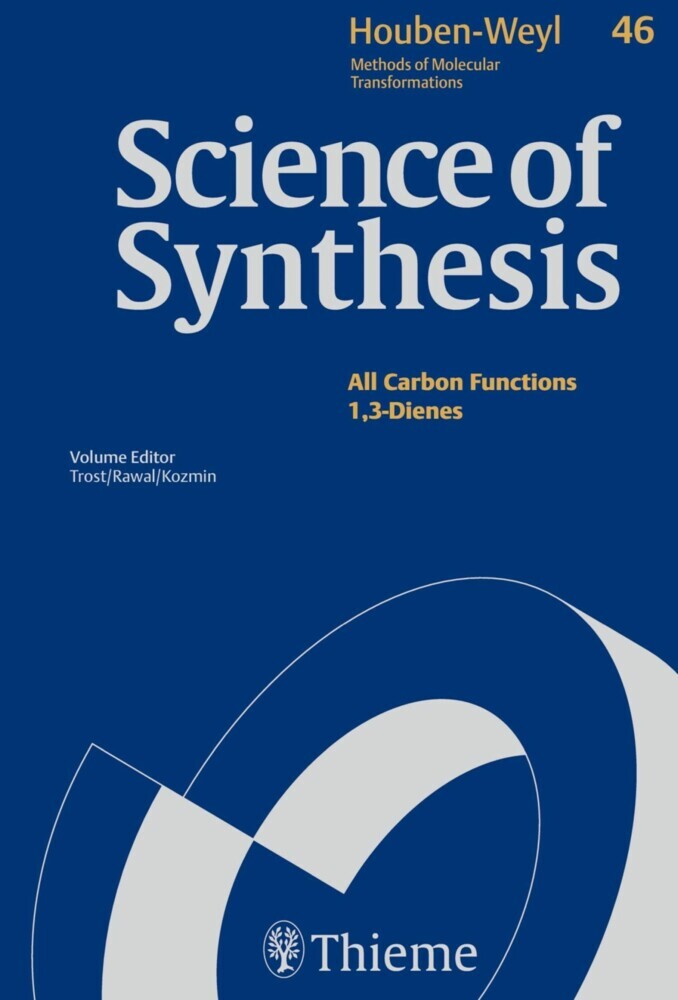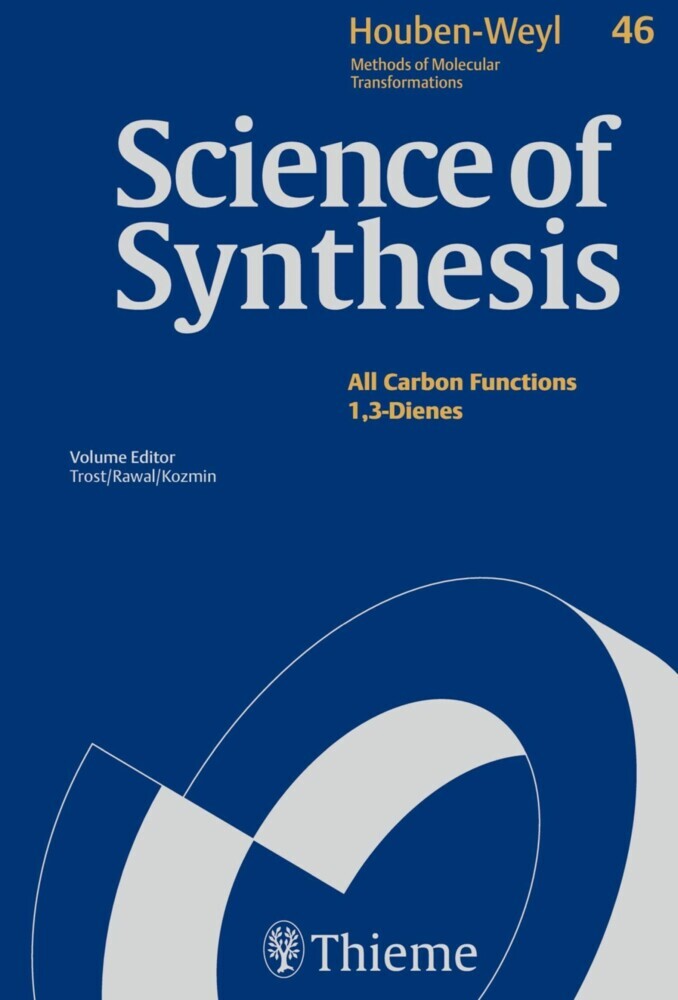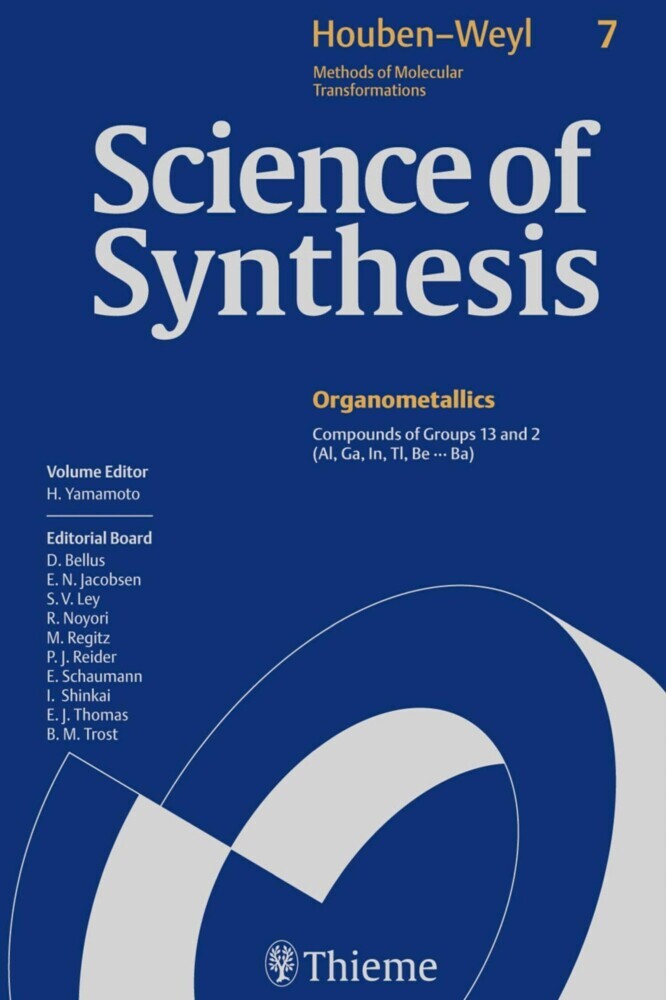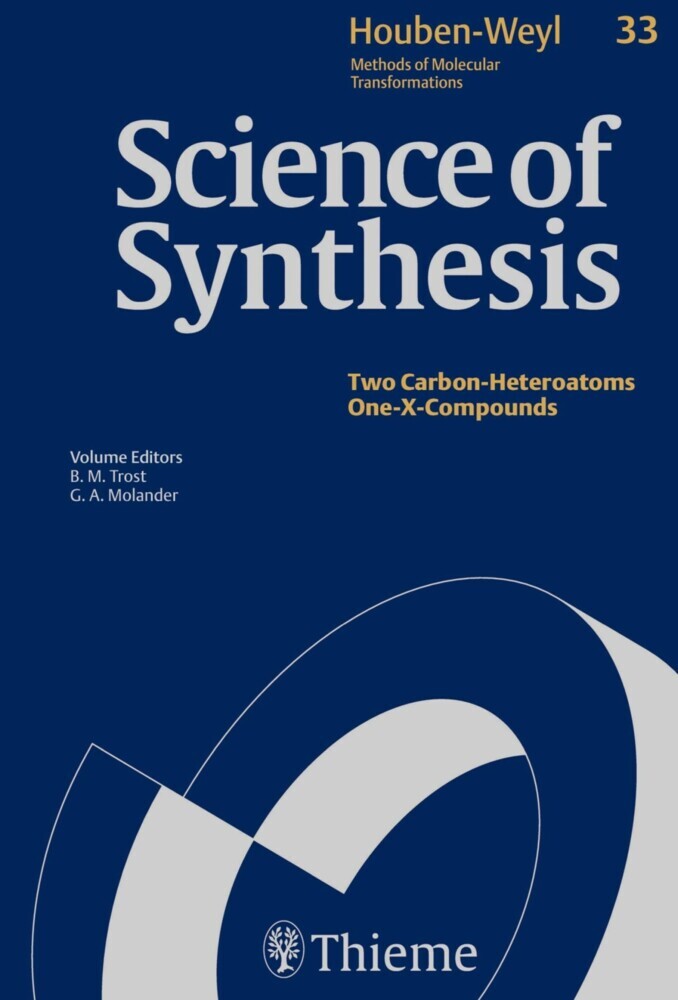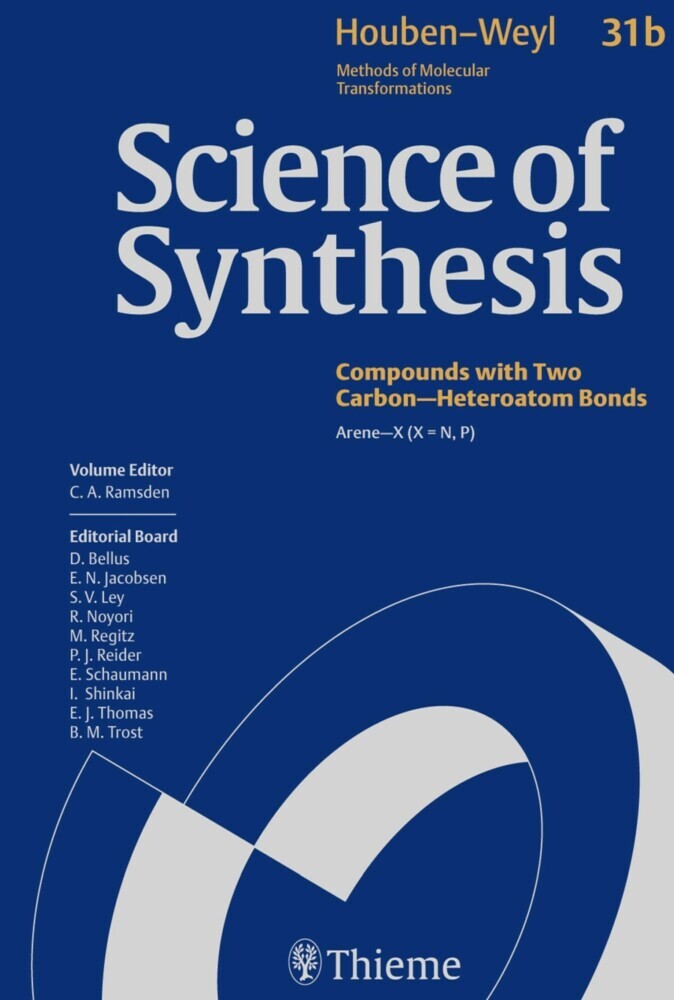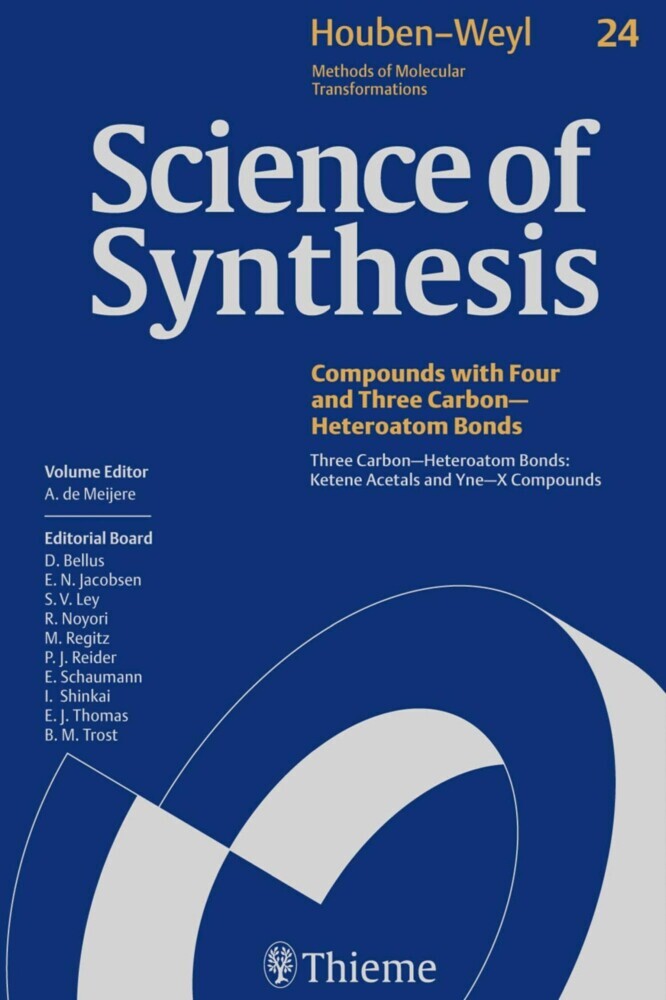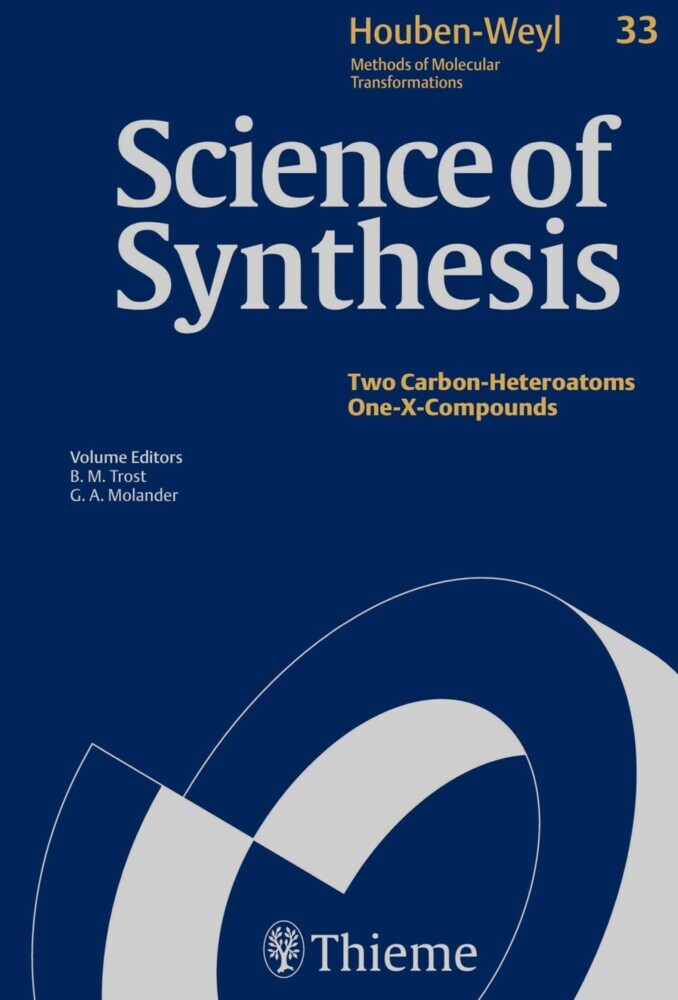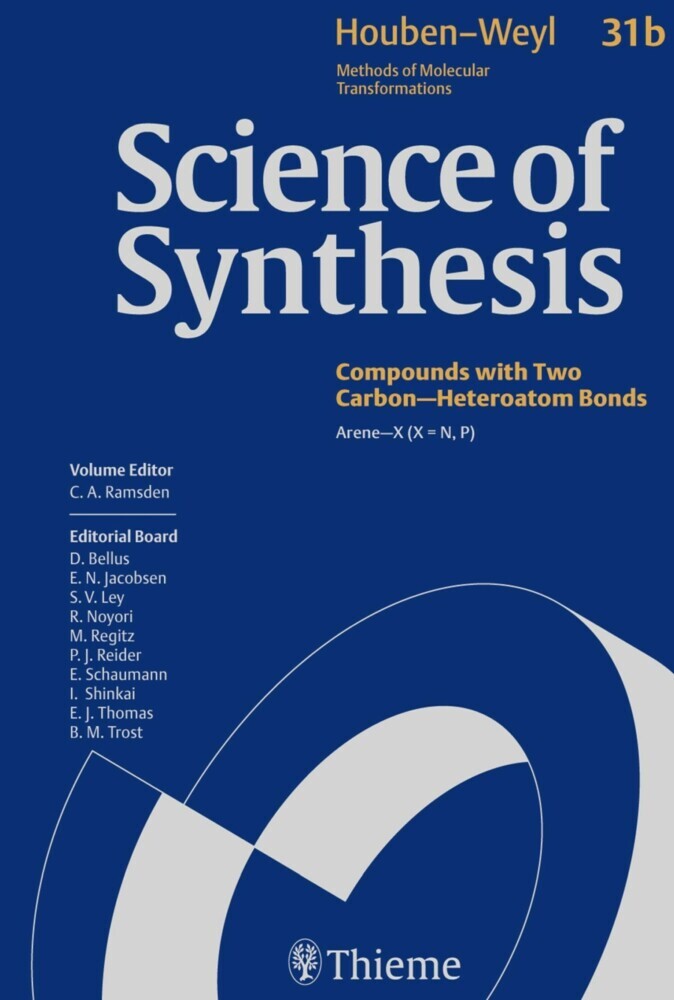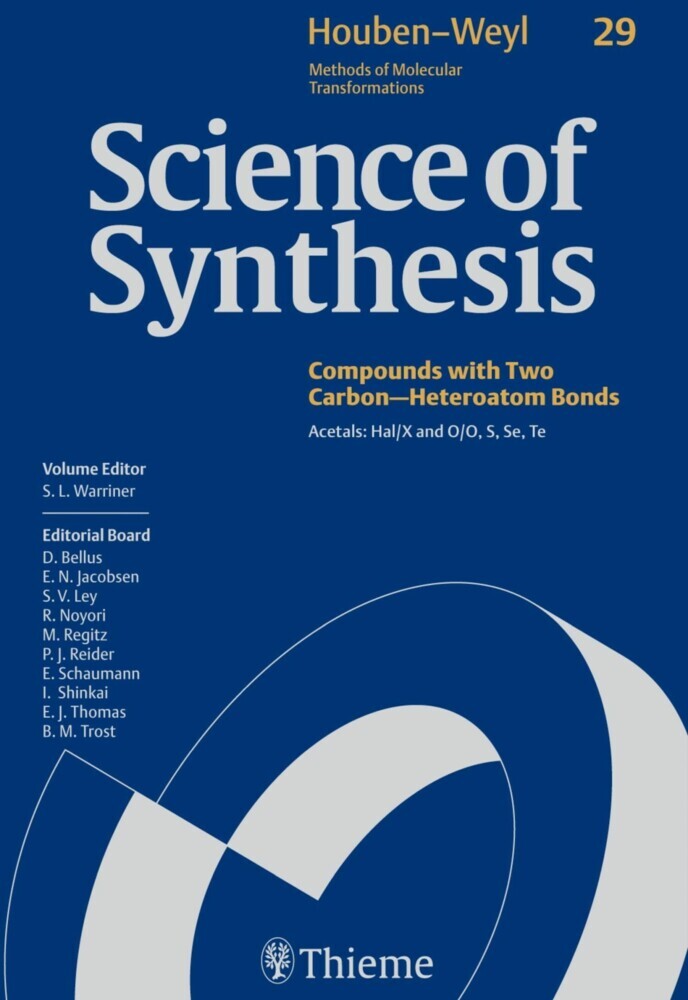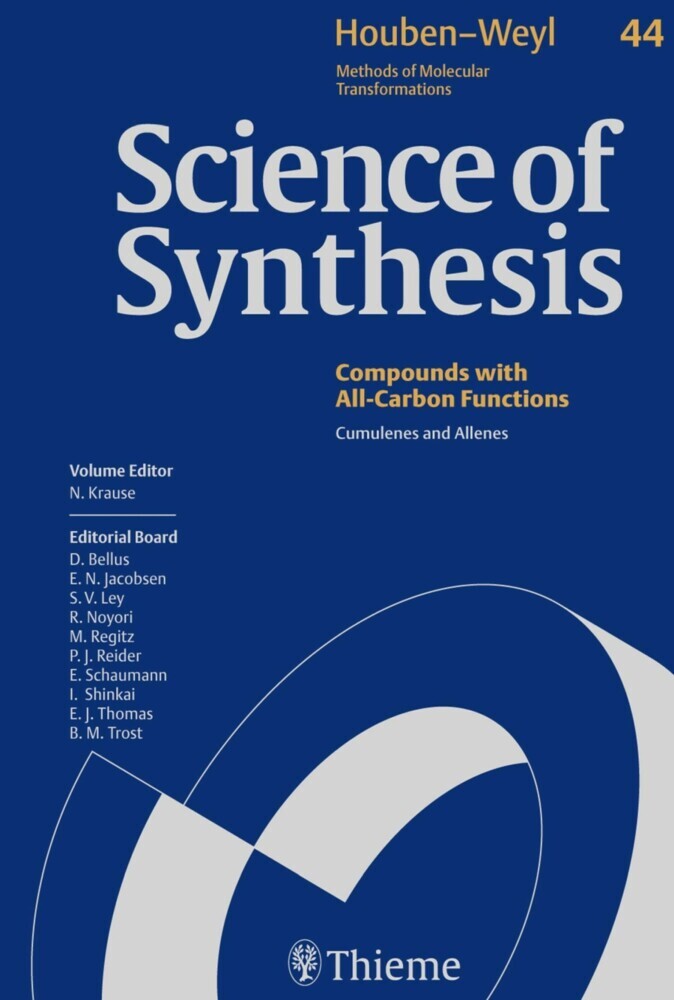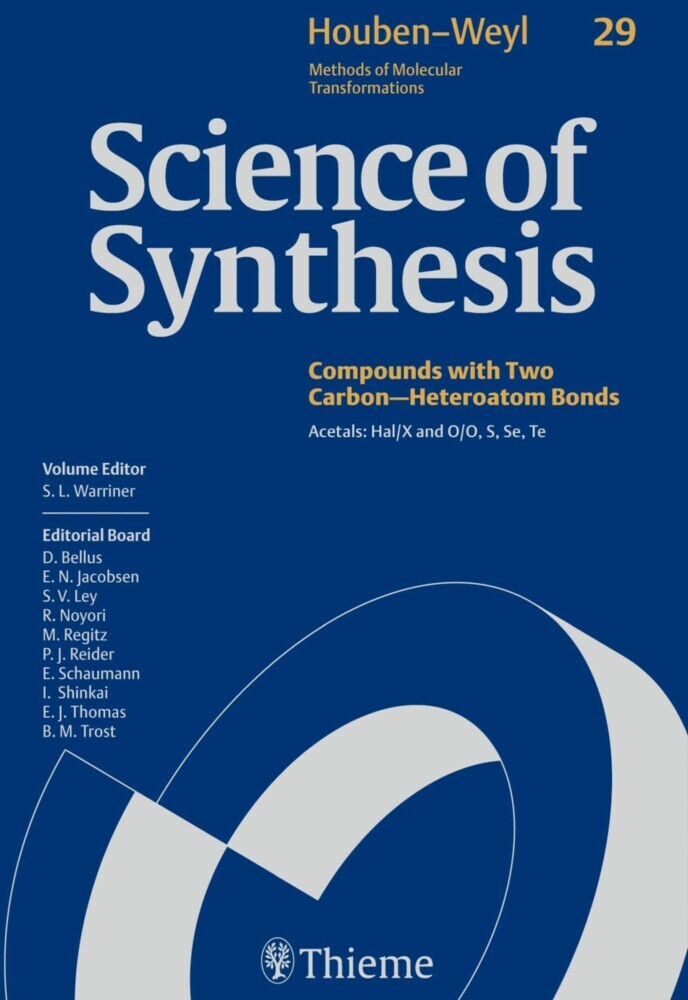Science of Synthesis: Houben-Weyl Methods of Molecular Transformations Vol. 46
1,3-Dienes
Science of Synthesis: Houben-Weyl Methods of Molecular Transformations is the entirely new edition of the acclaimed reference series Houben-Weyl, the standard synthetic chemistry resource since 1909. This new edition is published in English and will comprise 48 volumes published between the years 2000 and 2008.
Science of Synthesis is a quality reference work developed by a highly esteemed editorial board to provide a comprehensive and critical selection of reliable organic and organometallic synthetic methods. This unique resource is designed to be the first point of reference when searching for a synthesis strategy.
- Contains the expertise of presently 400 leading chemists worldwide
- Critically evaluates the preparative applicability and significance of the synthetic methods
- Discusses relevant background information and provides detailed experimental procedures
For full information on the Science of Synthesis series, visit the Science of Synthesis Homepage
1;Science of Synthesis - Volume 46: 1,3-Dienes;1 1.1;Title page;3 1.2;Imprint;5 1.3;Preface;6 1.4;Overview;8 1.5;Table of Contents;10 1.6;Introduction;24 1.7;46.1 Synthesis Using the Wittig and Related Phosphorus-, Silicon-, or Sulfur-Based Reactions;46 1.7.1;46.1.1 The Wittig Reaction;47 1.7.1.1;46.1.1.1 Method 1: Synthesis from Phosphorus Ylides and Enones or Enals;47 1.7.1.1.1;46.1.1.1.1 Variation 1: From Stabilized Ylides;48 1.7.1.1.2;46.1.1.1.2 Variation 2: From Nonstabilized Ylides;50 1.7.1.2;46.1.1.2 Method 2: Synthesis from Allyl Phosphorus Ylides and Carbonyl Compounds;53 1.7.1.3;46.1.1.3 Method 3: Synthesis by Tandem Oxidation--Wittig Reaction;57 1.7.1.3.1;46.1.1.3.1 Variation 1: Simultaneous Diene Formation;58 1.7.1.3.2;46.1.1.3.2 Variation 2: Sequential Diene Formation;58 1.7.2;46.1.2 The Horner--Wittig Reaction;60 1.7.2.1;46.1.2.1 Method 1: Synthesis from Phosphine Oxides and Enals;61 1.7.2.2;46.1.2.2 Method 2: Synthesis from Alkenylphosphine Oxides and Aldehydes or Ketones;61 1.7.3;46.1.3 The Horner--Wadsworth--Emmons Reaction;62 1.7.3.1;46.1.3.1 Method 1: Synthesis from Phosphonates and Enones or Enals;63 1.7.3.1.1;46.1.3.1.1 Variation 1: The Ando Method;65 1.7.3.1.2;46.1.3.1.2 Variation 2: The Still--Gennari Modification;66 1.7.3.2;46.1.3.2 Method 2: Synthesis from Alkenylphosphonates and Carbonyl Compounds;67 1.7.3.2.1;46.1.3.2.1 Variation 1: The Still--Gennari Modification;69 1.7.4;46.1.4 The Peterson Reaction;69 1.7.4.1;46.1.4.1 Method 1: Synthesis from a,ß-Unsaturated Carbonyl Compounds and Alkylsilanes;70 1.7.4.2;46.1.4.2 Method 2: Synthesis from Carbonyl Compounds and Allylsilanes;72 1.7.4.3;46.1.4.3 Method 3: The Vinylogous Peterson Elimination;76 1.7.5;46.1.5 The Julia Reaction and Its Variations;77 1.7.5.1;46.1.5.1 Method 1: Synthesis from a,ß-Unsaturated Carbonyl Compounds and Alkyl Sulfones;78 1.7.5.2;46.1.5.2 Method 2: Synthesis from Carbonyl Compounds and Allyl Sulfones;80 1.7.5.3;46.1.5.3 Method 3: The Keck Variation;82 1.8;46.2 Synthesis by Alkylidenation with Metal--Carbene Complexes and Related Reagents;86 1.8.1;46.2.1 Methylenation;86 1.8.1.1;46.2.1.1 Method 1: Synthesis Using Titanium-Based Reagents;86 1.8.1.1.1;46.2.1.1.1 Variation 1: Using the Tebbe Reagent;86 1.8.1.1.2;46.2.1.1.2 Variation 2: Using Bis(.5-cyclopentadienyl)(dihalozinc)(µ-methylene)titanium;91 1.8.1.1.3;46.2.1.1.3 Variation 3: Using Bis(.5-cyclopentadienyl)dimethyltitanium(IV) (The Petasis Reagent);92 1.8.1.1.4;46.2.1.1.4 Variation 4: Using Titanacyclobutenes;95 1.8.1.2;46.2.1.2 Method 2: Synthesis Using Zinc-Based Reagents;96 1.8.1.3;46.2.1.3 Method 3: Synthesis Using Miscellaneous Reagents;100 1.8.2;46.2.2 Halomethylenation and Related Reactions;102 1.8.2.1;46.2.2.1 Method 1: Synthesis Using Titanium-Based Reagents;103 1.8.2.2;46.2.2.2 Method 2: Synthesis Using Zinc-Based Reagents;104 1.8.2.3;46.2.2.3 Method 3: Synthesis Using Chromium-Based Reagents;105 1.8.3;46.2.3 Other Alkylidenation Reactions;110 1.8.3.1;46.2.3.1 Method 1: Synthesis Using Titanium-Based Reagents;110 1.8.3.2;46.2.3.2 Method 2: Synthesis Using Zinc-Based Reagents;113 1.8.3.3;46.2.3.3 Method 3: Synthesis Using Chromium-Based Reagents;114 1.8.3.4;46.2.3.4 Method 4: Synthesis Using Miscellaneous Reagents;115 1.9;46.3 Synthesis by Alkene Metathesis;120 1.9.1;46.3.1 Method 1: Ring-Closing Metathesis of Enynes;125 1.9.1.1;46.3.1.1 Variation 1: Using Grubbs' Catalysts;125 1.9.1.2;46.3.1.2 Variation 2: Polycyclization Using Grubbs' Catalysts;130 1.9.1.3;46.3.1.3 Variation 3: Using the Hoveyda--Blechert Catalyst;135 1.9.1.4;46.3.1.4 Variation 4: Polycyclization Using the Hoveyda--Blechert Catalyst;137 1.9.1.5;46.3.1.5 Variation 5: Using the Schrock Catalyst;138 1.9.2;46.3.2 Method 2: Ring-Closing Metathesis of Alkenes with Conjugated Dienes;141 1.9.3;46.3.3 Method 3: Cross Metathesis of Alkynes with Alkenes;144 1.9.3.1;46.3.3.1 Variation 1: Metathesis of Alkynes with Ethene;144 1.9.3.2;46.3.3.2 Variation 2:
| ISBN | 9783131722614 |
|---|---|
| Artikelnummer | 9783131722614 |
| Medientyp | E-Book - PDF |
| Copyrightjahr | 2013 |
| Verlag | Georg Thieme Verlag KG |
| Umfang | 767 Seiten |
| Sprache | Englisch |
| Kopierschutz | Digitales Wasserzeichen |

